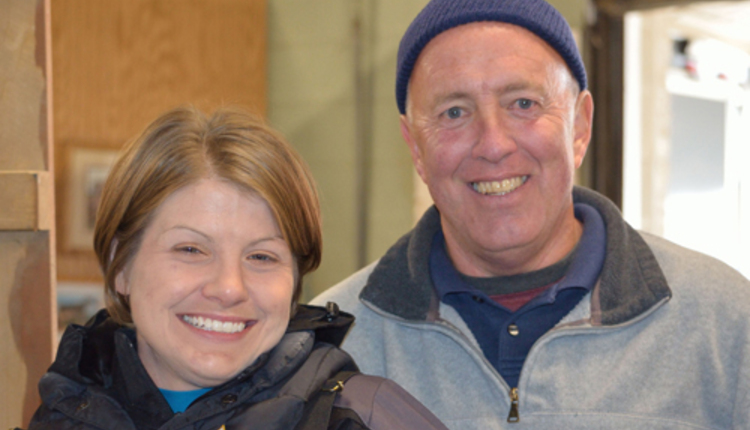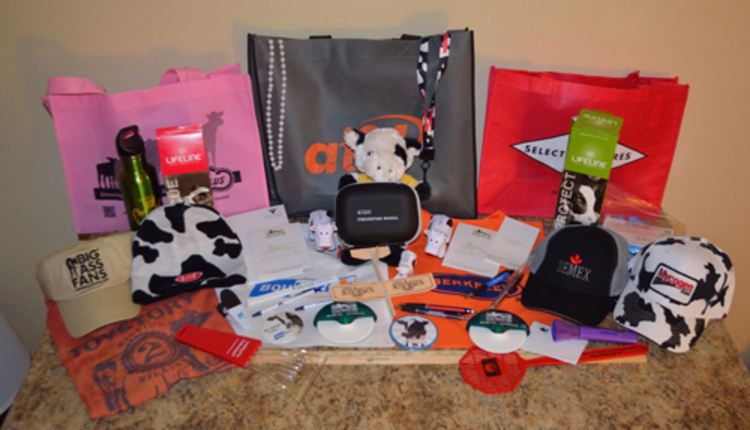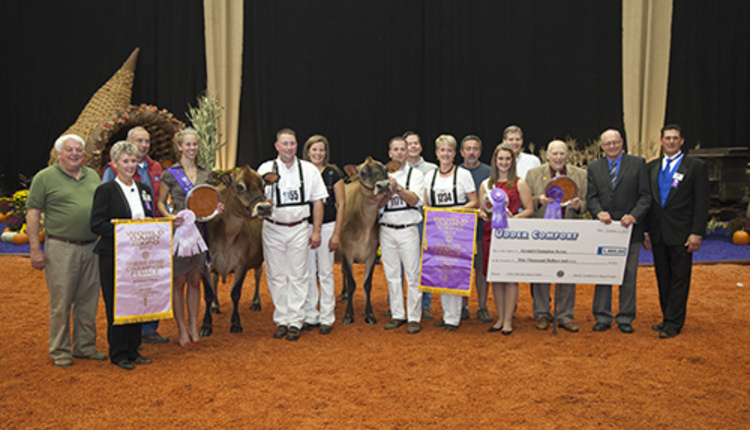You may have heard Kelly Clarkson sing, "What doesn't kill you makes you stronger." However, Julia Ridpath, of the National Animal Disease Center/ARS/USDA staff, reminded dairy producers that in the case of animals exposed to BVD virus, this saying does not apply. Ridpath explained how to optimize management of BVDV risk factors at the first annual Vita Plus Calf Summit on June 20 in Green Bay, Wis.
One challenge with managing BVDV risk factors in a herd is preventing persistently infected (PI) animals from entering the herd. PI animals silently do damage to a herd, as Ridpath explained, "You can't walk out into a lot, sniff the air and say, ‘wow, BVD.'"
PI animals are infected in utero and are often born from an uninfected dam. PI animals continually shed the virus into the environment without showing signs of infection. Therefore, herd mates are constantly trying to fight infection. As a result of this immune response, herd mates do not have as much energy to go toward milk production, growth or fighting other diseases. So in the case of a cow exposed to a PI animal, the exposure may not kill her but it certainly isn't going to make her stronger.
In order to prevent a PI animal from entering your herd, be sure to develop a BVDV-control program consisting of the following three components.
Use surveillance
Every PI animal must be identified and removed. A 90 percent detection accuracy that works with other diseases will not cut it with BVDV. Therefore, BVDV testing requires a high standard for accuracy. Talk to your veterinarian about BVDV testing options. The sooner a PI animal can be eliminated from a herd, the better.
Build a biosecurity system
The risk of BVDV is lowest when a herd is truly closed. This isn't possible in many cases, especially since wildlife can expose cows to BVDV. Instead, producers should have a biosecurity plan in place. For example, all purchased animals should be kept separate until they are confirmed BVDV-free, and calves that are born from purchased bred animals should not be exposed to the rest of the herd until the calf is confirmed BVDV-free.
Raise herd resistance by vaccination
Vaccination cannot prevent all BVDV infections but it has been shown to be effective in reducing the number of infections. Both modified-live virus (MLV) and killed vaccines are available for control of BVDV infections. Killed vaccines are more stable and safe, but the duration and breadth of immunity may be less with killed vaccines. Choose a vaccination system that best fits your herd. Keep in mind, however, that vaccination cannot compensate for poor surveillance or biosecurity.
One challenge with managing BVDV risk factors in a herd is preventing persistently infected (PI) animals from entering the herd. PI animals silently do damage to a herd, as Ridpath explained, "You can't walk out into a lot, sniff the air and say, ‘wow, BVD.'"
PI animals are infected in utero and are often born from an uninfected dam. PI animals continually shed the virus into the environment without showing signs of infection. Therefore, herd mates are constantly trying to fight infection. As a result of this immune response, herd mates do not have as much energy to go toward milk production, growth or fighting other diseases. So in the case of a cow exposed to a PI animal, the exposure may not kill her but it certainly isn't going to make her stronger.
In order to prevent a PI animal from entering your herd, be sure to develop a BVDV-control program consisting of the following three components.
Use surveillance
Every PI animal must be identified and removed. A 90 percent detection accuracy that works with other diseases will not cut it with BVDV. Therefore, BVDV testing requires a high standard for accuracy. Talk to your veterinarian about BVDV testing options. The sooner a PI animal can be eliminated from a herd, the better.
Build a biosecurity system
The risk of BVDV is lowest when a herd is truly closed. This isn't possible in many cases, especially since wildlife can expose cows to BVDV. Instead, producers should have a biosecurity plan in place. For example, all purchased animals should be kept separate until they are confirmed BVDV-free, and calves that are born from purchased bred animals should not be exposed to the rest of the herd until the calf is confirmed BVDV-free.
Raise herd resistance by vaccination
Vaccination cannot prevent all BVDV infections but it has been shown to be effective in reducing the number of infections. Both modified-live virus (MLV) and killed vaccines are available for control of BVDV infections. Killed vaccines are more stable and safe, but the duration and breadth of immunity may be less with killed vaccines. Choose a vaccination system that best fits your herd. Keep in mind, however, that vaccination cannot compensate for poor surveillance or biosecurity.








